
The castle of Sant'Elmo (Castel Sant'elmo) is a medieval fortress located on the hill of Vomero in Naples.
The name "Sant'elmo" derives from the former Church of the 10th century, Sant'erasmo, dedicated to St. Erasmus of Antioch (Formia). Later the Church name was shortened to "Ermo" (Ermo) and finally replaced by "Elmo" (Elmo).
Documents date the construction on the site of the castle 1275 year. Originally known as Belforte (Belforte), it was likely a fortified residence, surrounded by walls, the entrance gate which marked the two towers.
In 1329 the king of Naples Robert of Anjou enlarged the fortress. By 1336, the Palace was called the castle, and work continued until the year 1343. Approximately in the same years were carried out work on the construction of the adjacent Carthusian monastery of San Martino, located at the foot of the castle. The monastery currently houses the Museum.
In 1456, the fortress Castel Sant'elmo was damaged in the earthquake, special damages suffered external walls and towers, which were destroyed.
Between 1537 and 1547 the years, the castle acquired the form of a hexagonal star. In fact, with its numerous embrasures in the bastions and high walls surrounded by a moat, the castle was the perfect match for the strategic and defensive functions.
In 1538, above the entrance gate was a memorial inscription, surmounted by the coat of arms of Charles V and the Imperial double-headed eagle, which can be seen at the present time.
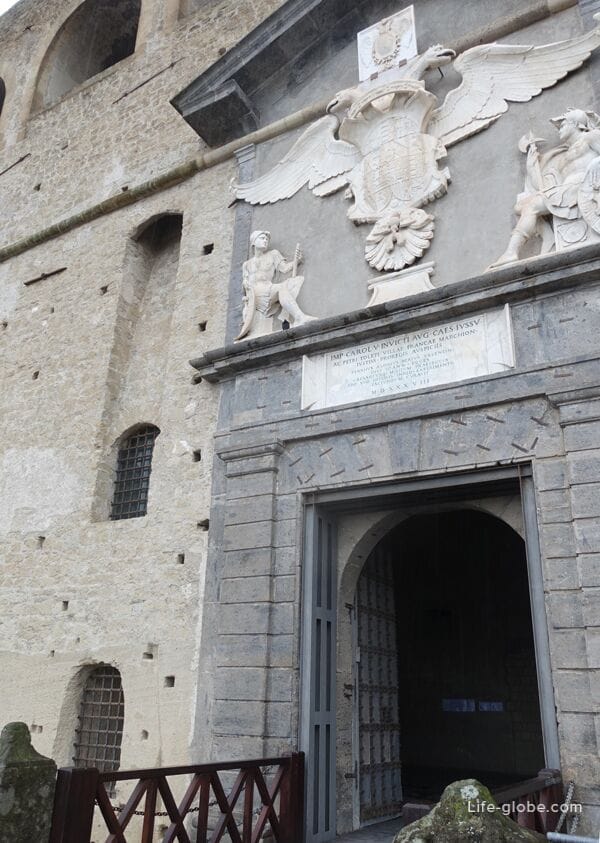
In 1547 in the structure of the castle housed offices for the officers, the house chaplain, a Central Playground, a Church, a warehouse of ammunition and other interior spaces.
In 1587 the munitions of the castle was struck by lightning and exploded, destroying the Church, the house of the chaplain, and quarters for officers. Reconstruction was carried out between 1599 and 1601 years. Despite consistent follow-up adjustment and improvement for centuries, the castle kept its original structure. Built of volcanic tuff, he stood and reigned over Naples.
Since 1604, the castle was used as a place for opinions, including Tommaso Campanella, and later as a military prison.
Castel Sant'elmo remained military property until 1976, when the provincial administration took a major project to restore the castle. After seven years the original castle was restored, was structurally strong, recreating the original galleries, parapet walkways and underground chambers.
Currently the fortress is a historical monument. Now it's the monumental complex of Castel Sant'elmo open to the public and all interested persons. It serves as a Museum, exhibition hall and offices. Some of the indoor areas redesigned for a conference and auditoriums. On site or in the castle are different exhibitions and cultural events, gala dinners and shows.
The impressive outer walls of the castle and its interior still in effect.


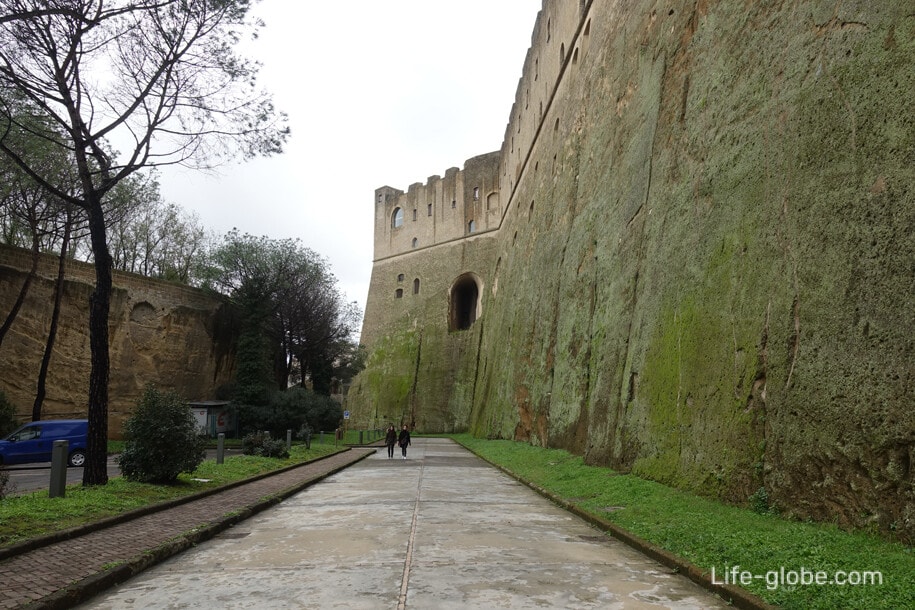
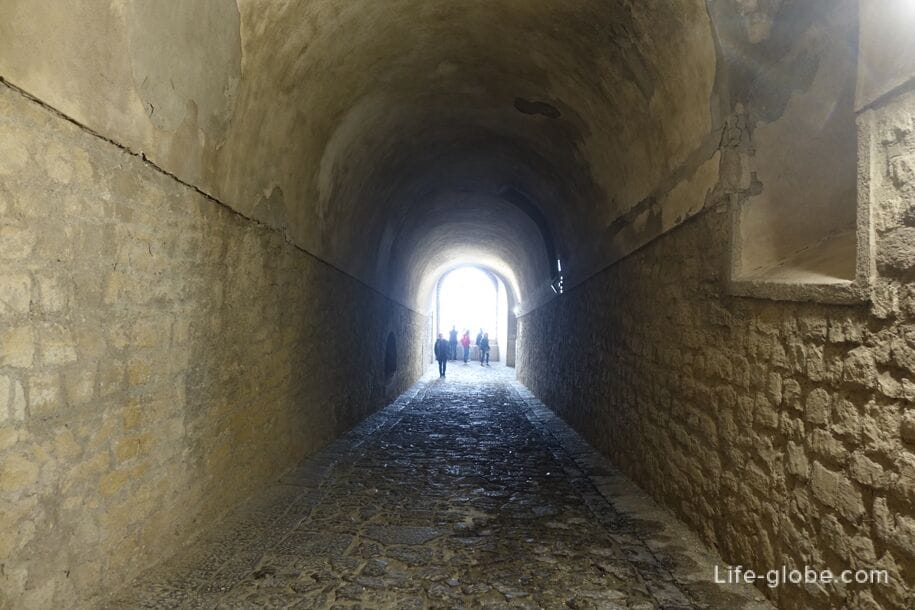
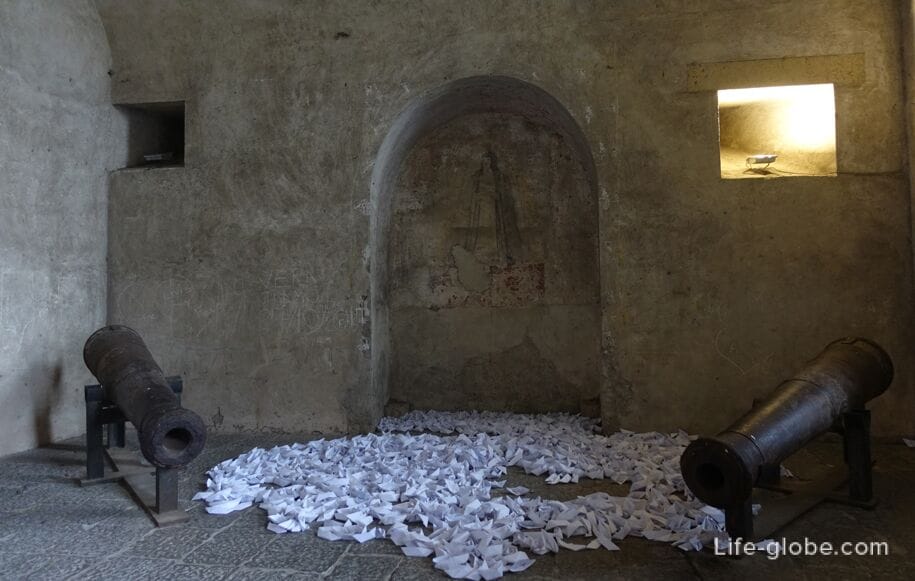
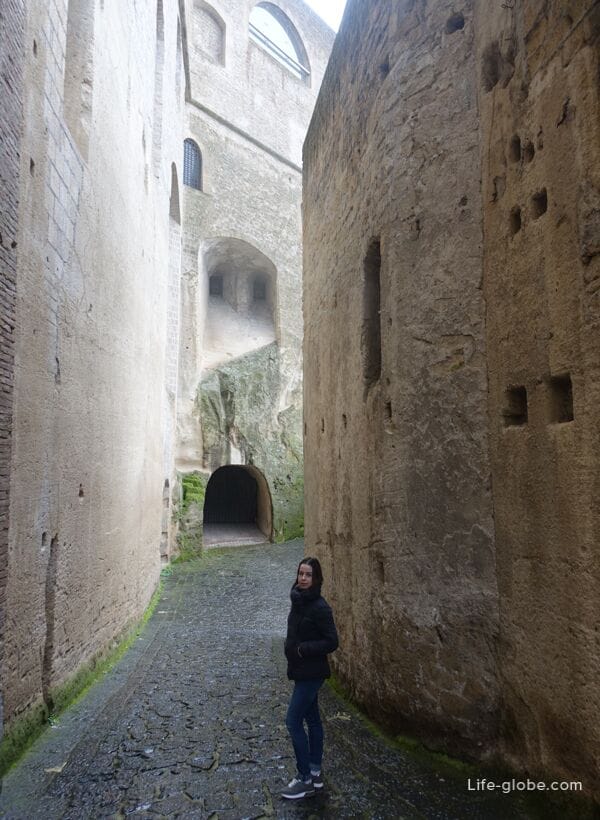
The main entrance to the castle leads up a ramp and wooden bridge. Behind the bridge is the "cave hermit", which, according to traditional legends, in ancient times there lived a hermit.
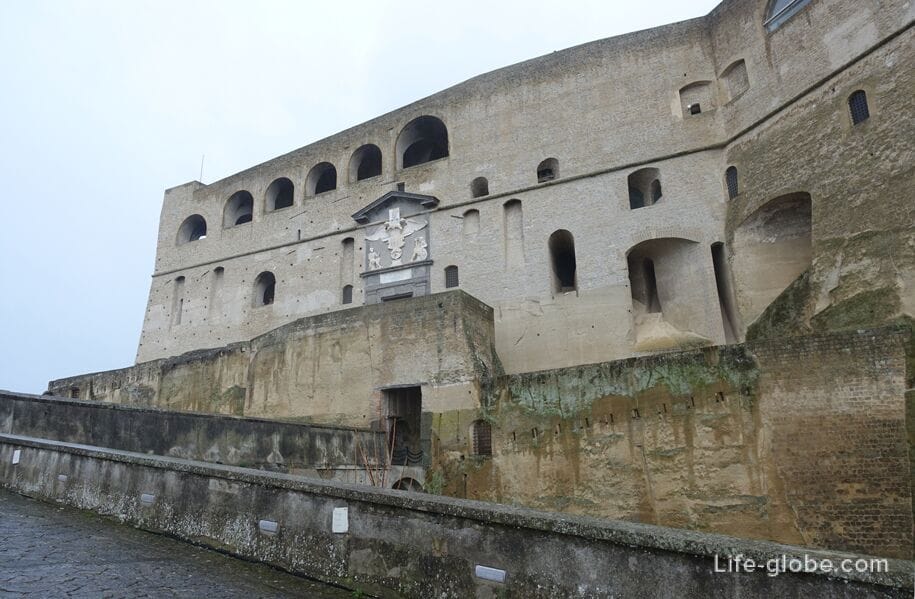
Special attention deserves the top platform of the castle - Piazza d Armi (Piazza d'armi), facing the former military facilities. During the summer months there are festivals, theatrical performances, concerts and gala dinners. The size of the area: 9 000 square meters - Capacity: 800-1000 seats.
On the ground you can see two of the most famous setup - a large metal helmet near the railing and tapered metal sculpture with a diameter of about 15 feet at the bottom with the cutouts on the perimeter. Nearby is the little Church dedicated to Sant Erasmo, built by the Spanish architect Pietro Prato in 1547 (Chiesetta di Sant'erasmo).
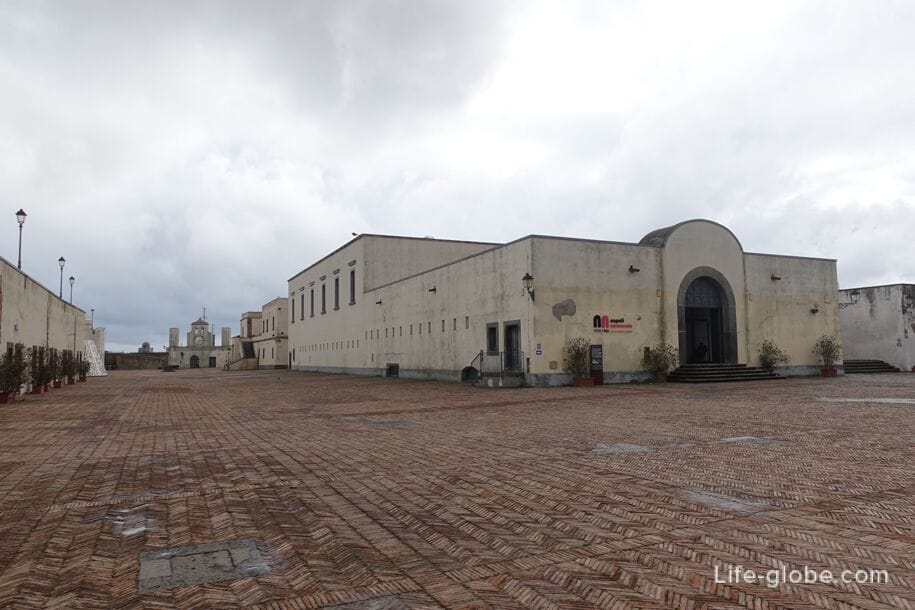
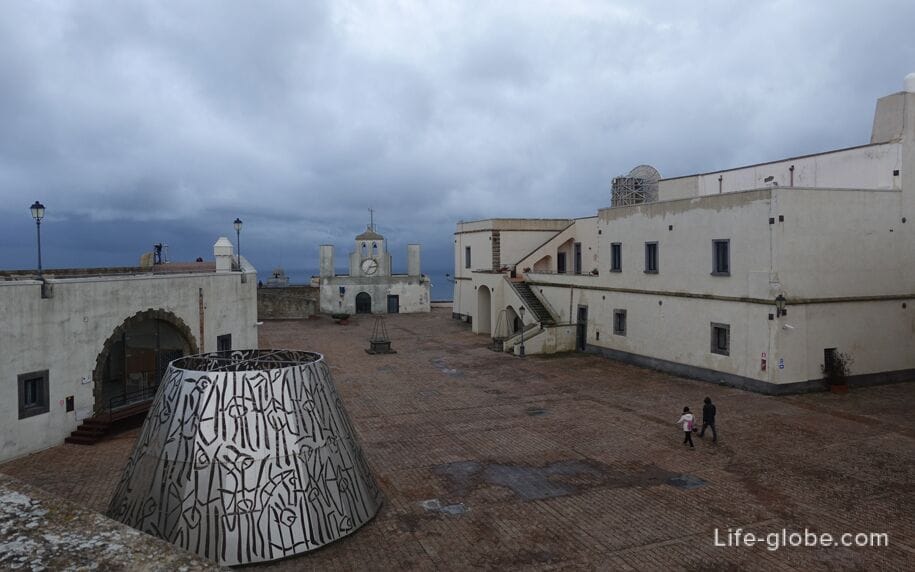
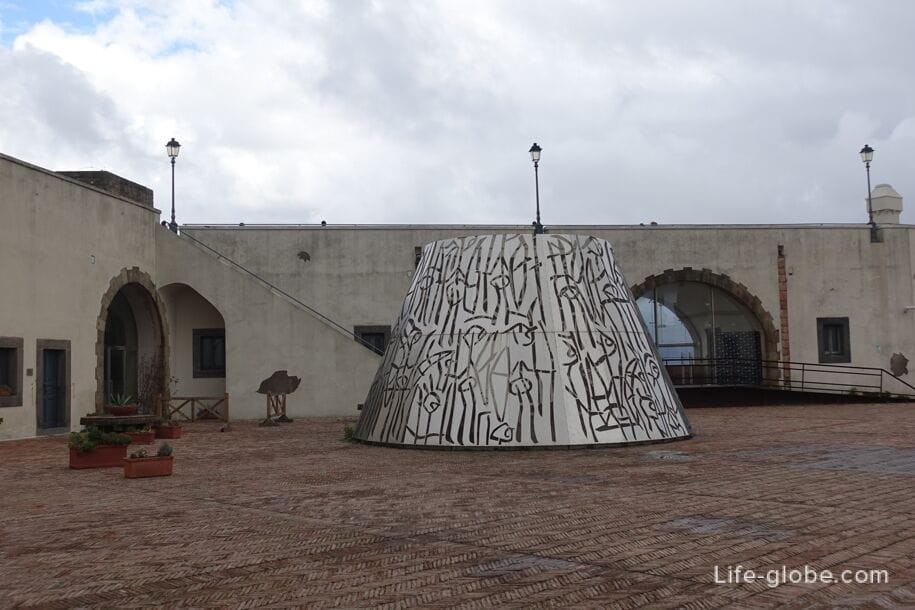
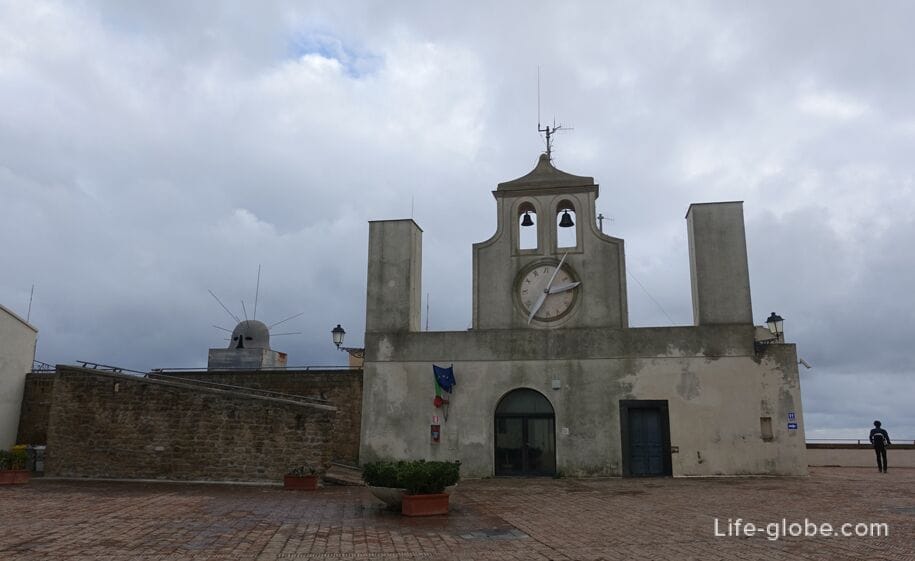
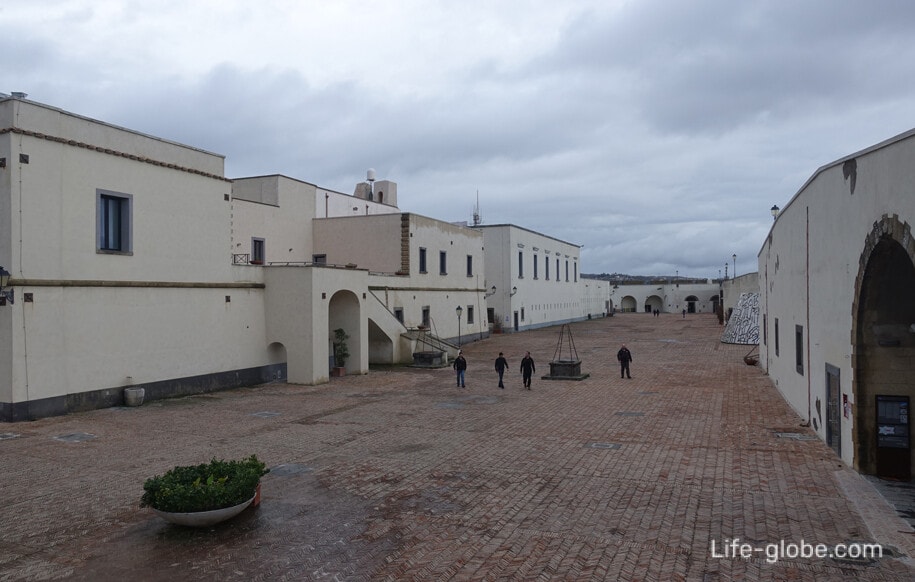
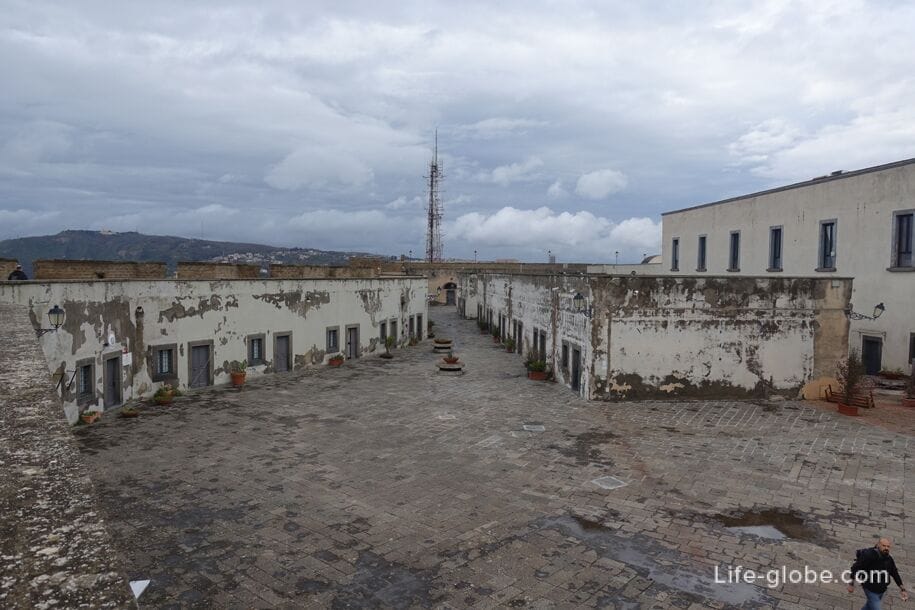
In the main building and the top platform is a Museum of Naples 1910-1980 years (Museo del Novecento), in which you can see some of the work created by Neapolitan artists or in any way related to the city of the period from 1910 to 1980.
The Museum features over 170 works, including sculptures, paintings and graphics, made almost exclusively of Neapolitan artists, with the aim of chronological documentation, in accordance with the artistic development of the twentieth century in Naples.
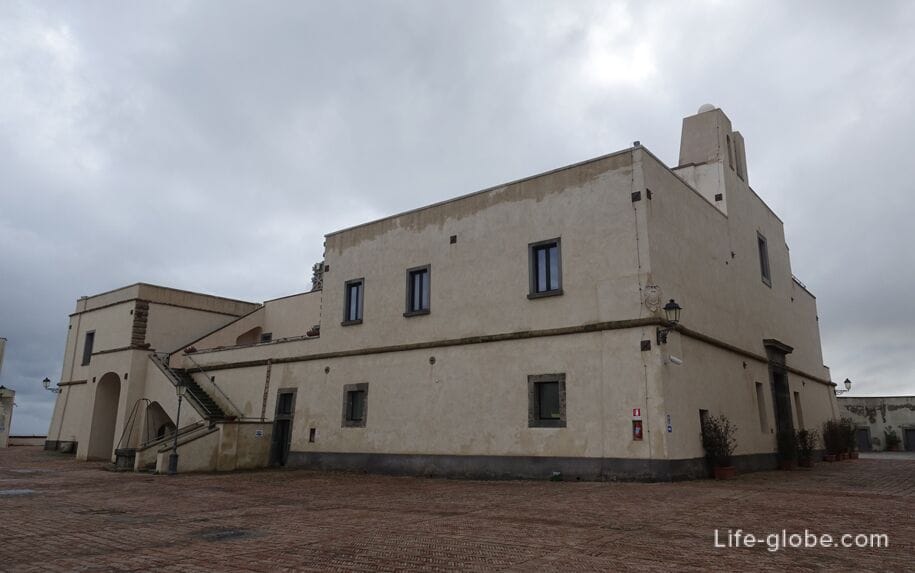
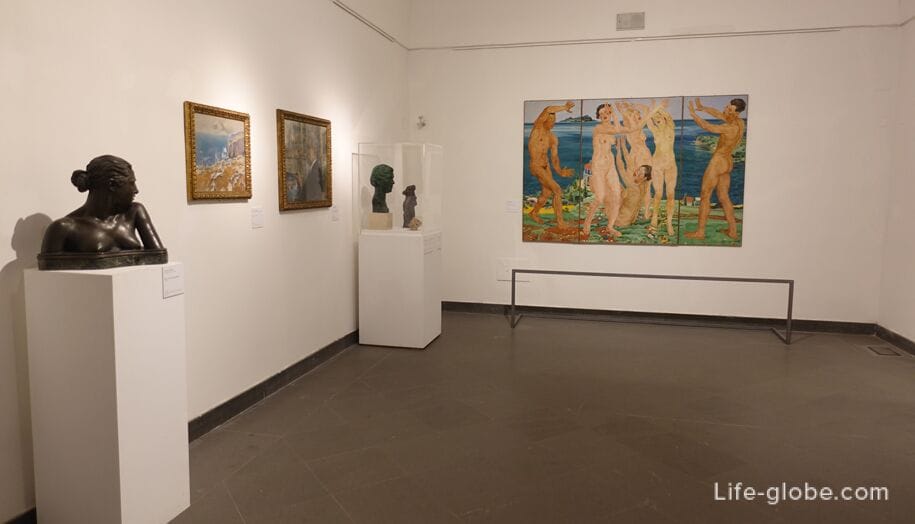

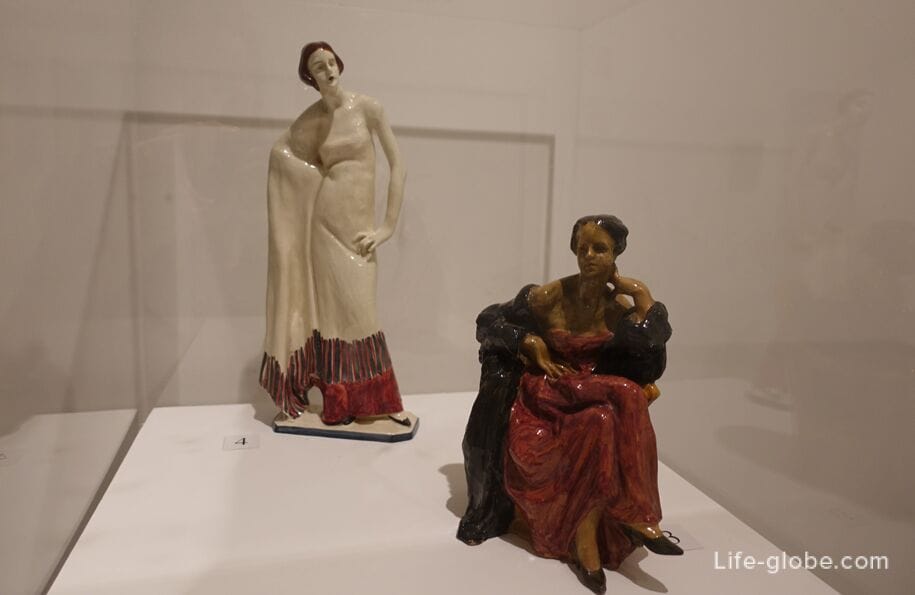

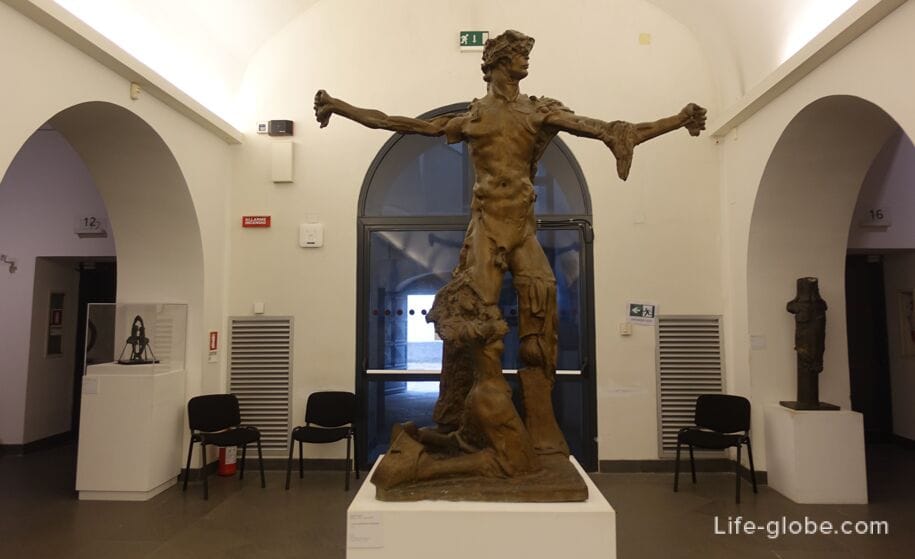
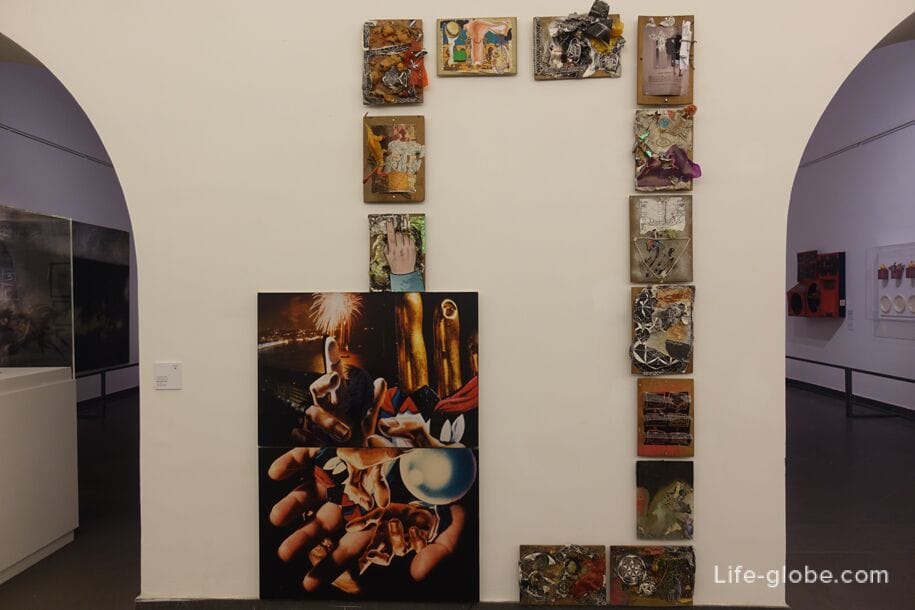

On the inner perimeter of the castle walls, around Piazza d Armi, are the security of the paths and grounds (now a pedestrian zone for visitors), once of great observatories of the time.
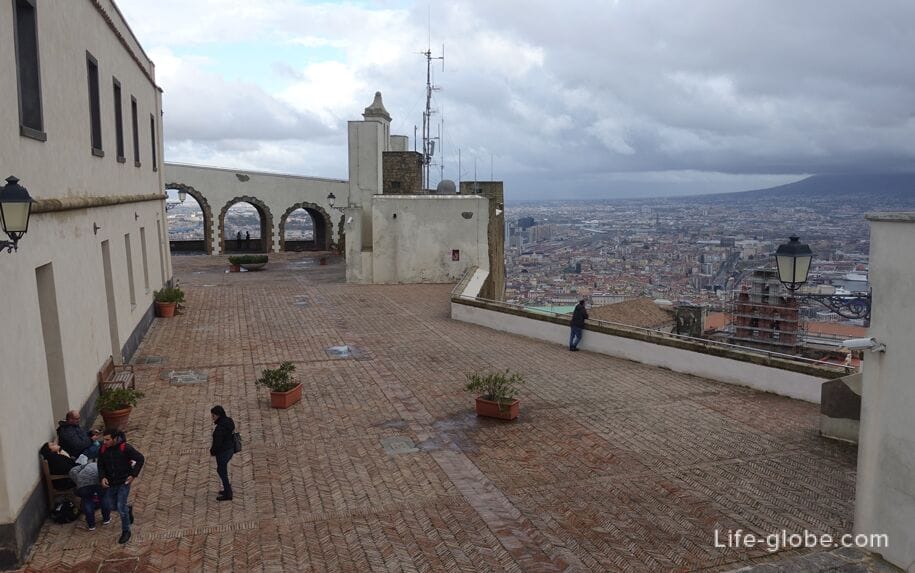
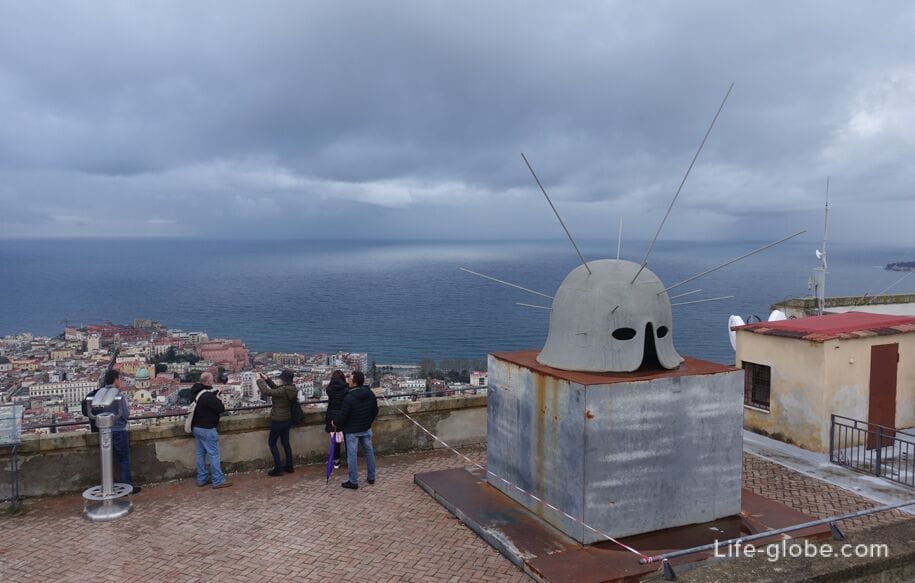
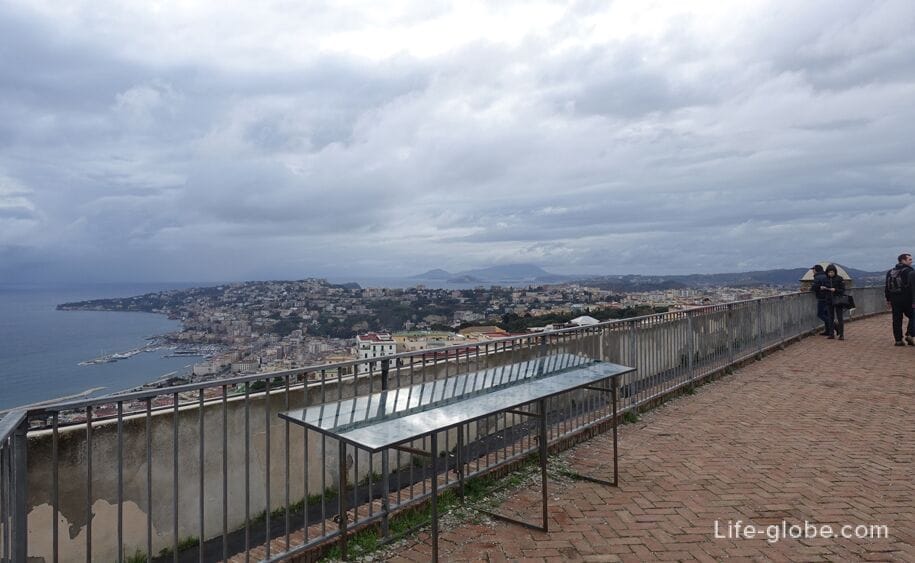
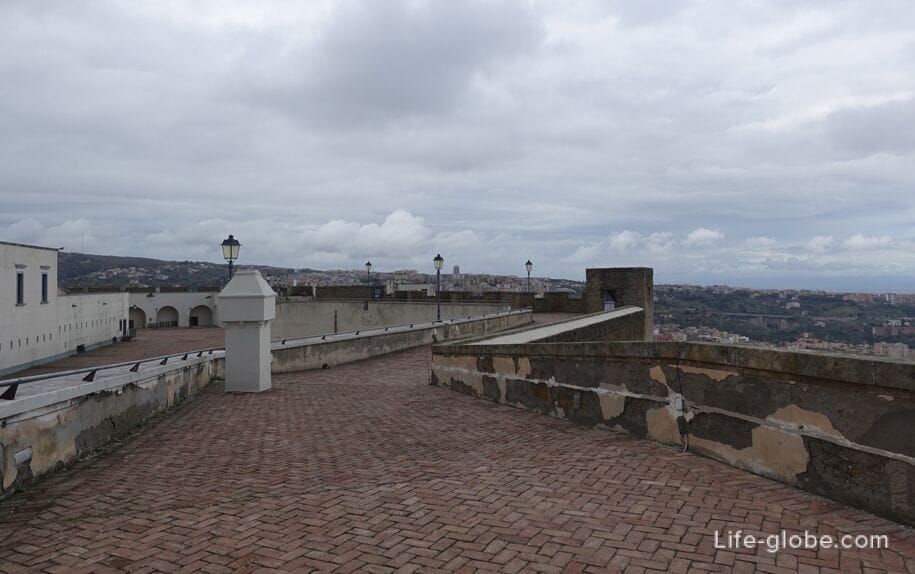

Vantage point, the inside decorated with mosaics, consisting of roughly 9 000 ceramic tiles, glazed and decorated by hand.
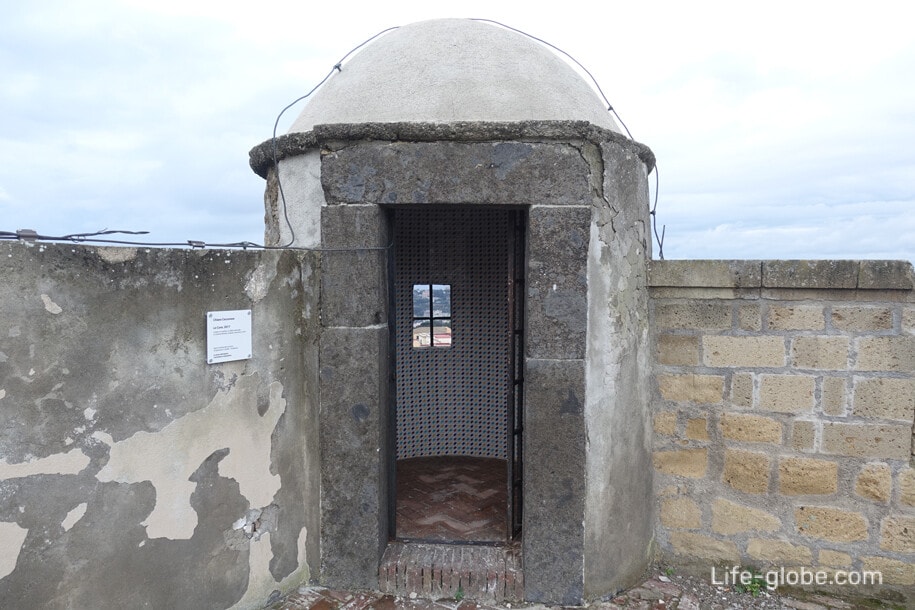
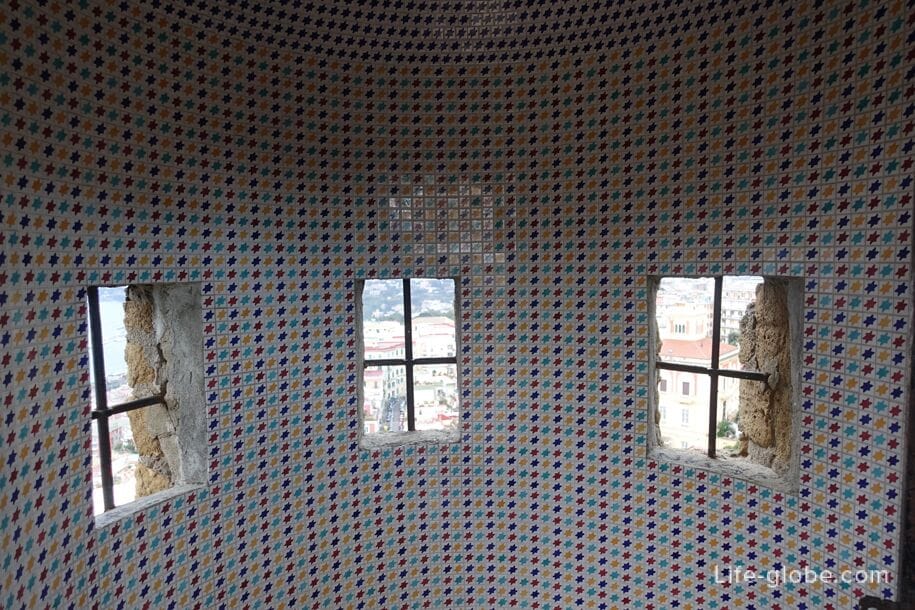
Due to its location, the castle is not only visible from many points in Naples, but also the grounds of the castle offer some of the best panoramic views of Naples, Bay of Naples, Vesuvius and surrounding areas: the Islands of Ischia and Capri, as well as the outline of the Amalfi coast.
View of the castle from town square

The panoramic views from the upper grounds of the castle

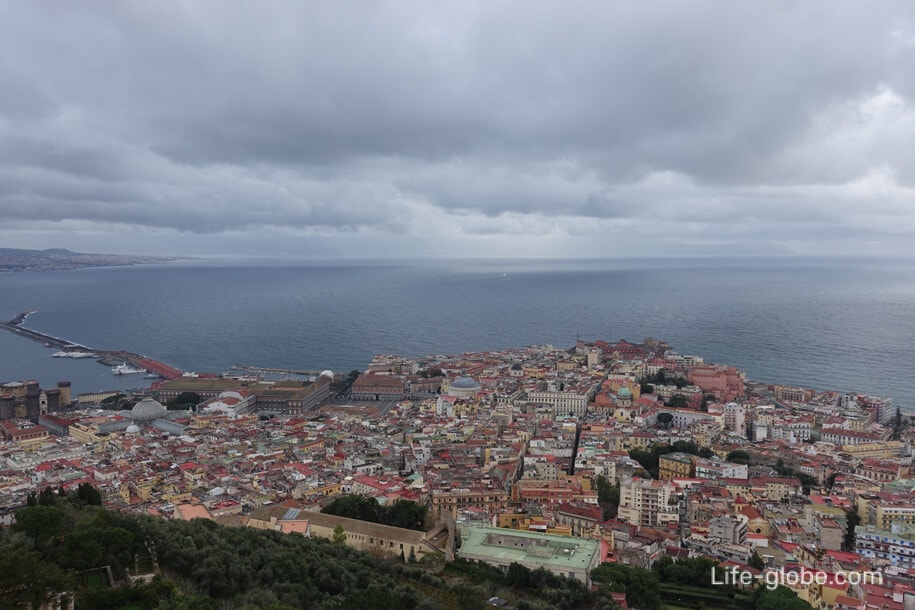
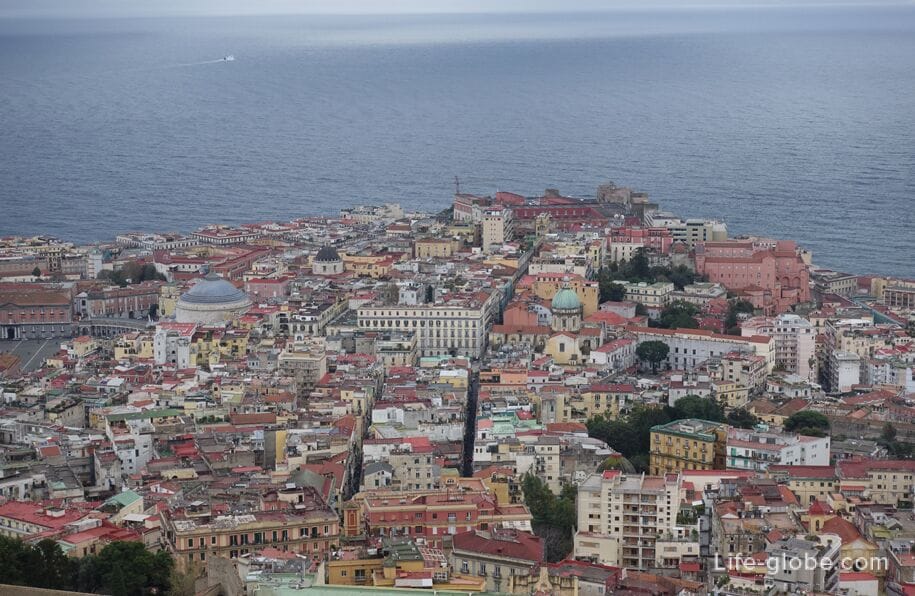

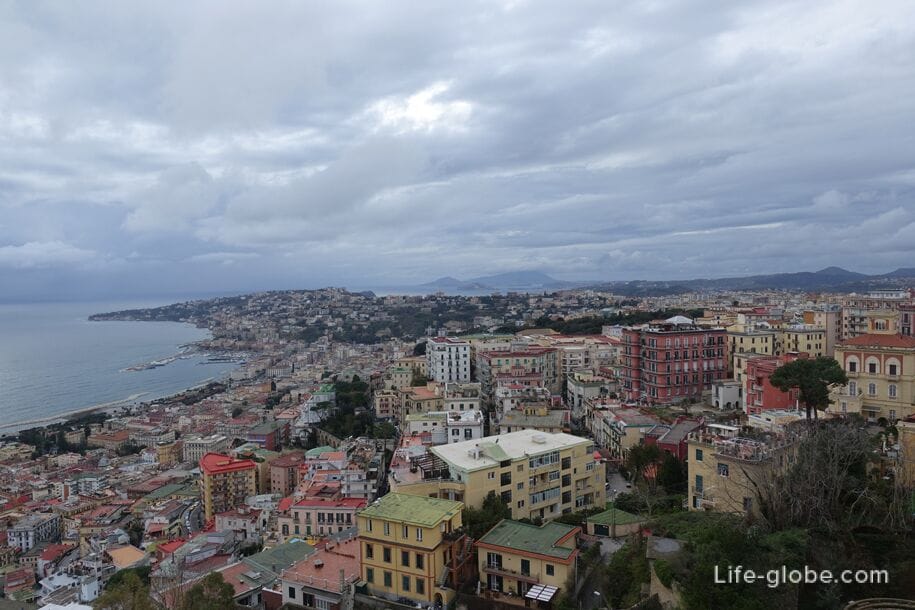

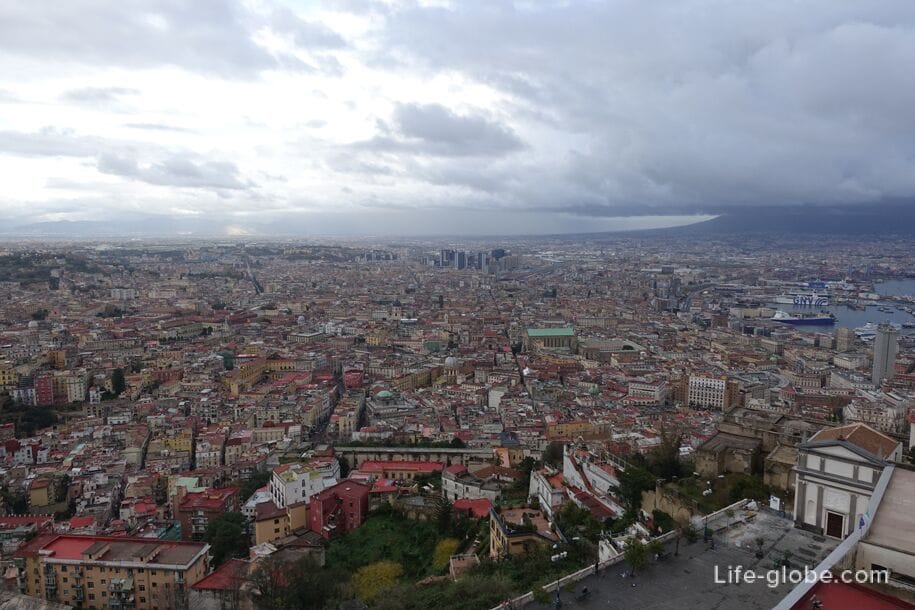
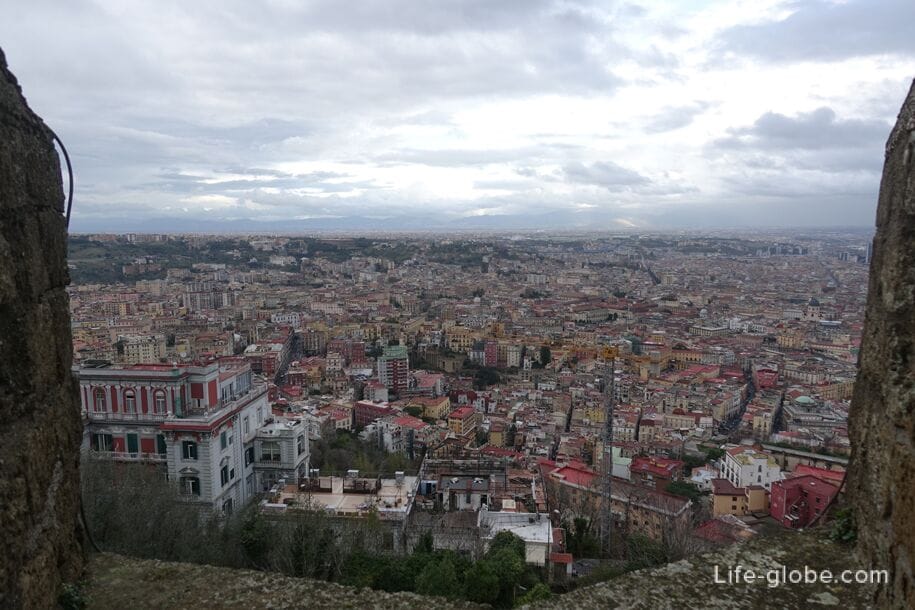

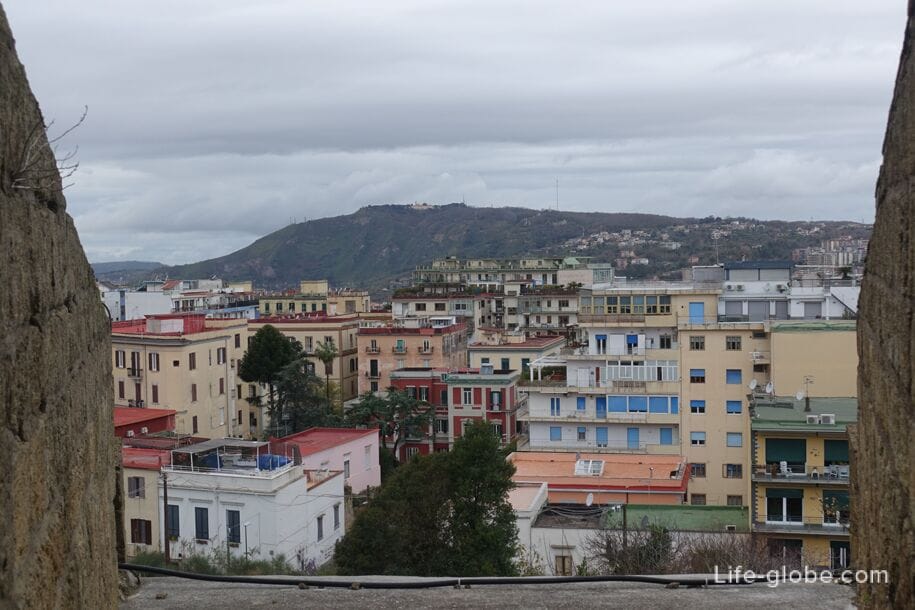
Schedule of Castel Sant Elmo: daily from 8:30 to 19:30, last entrance at 18:30.
Museo Novecento in the castle: every day except Tuesday, from 9:30 to 17:00, last entry 16:15.
Entrance fees to the castle of Sant'elmo: full price: € 5,00; reduced ticket: € 2.50; Tuesdays: 2.50. Free: for EU citizens under 18 and for all visitors the first Sunday of each month.
By the way, now in many museums of Naples and the surrounding area is open with free admission the first Sunday of each month, for example: archaeological areas of Pompeii and Herculaneum.
Attention! Opening hours of the castle and Museum, the ticket price and a free day of visit may vary, check before visiting. The cost of entrance tickets and schedule can vary depending on performing various temporary exhibitions and events at the castle.
The castle has two elevators, which whisk visitors to the top platform. You can also walk from the North-East side.
The location of the castle of Sant'elmocastle is located on a hill (the Vomero hill), at the address: via Tito Angelini, 22, 80129 Naples (Via Tito Angelini, 22, 80129 Napoli NA, Italy), entrance from street, Largo S. Martino.
From the historical centre of Naples, in the castle is accessed by a panoramic staircase, Pedamentina. Climbing stairs accompanied by panoramic views of Naples. At the top, above the stairs and near the castle there's an observation deck and the Museum of Certosa di San Martino (Certosa e Museo di San Martino). Read more about panoramic stairs Pedamentina...
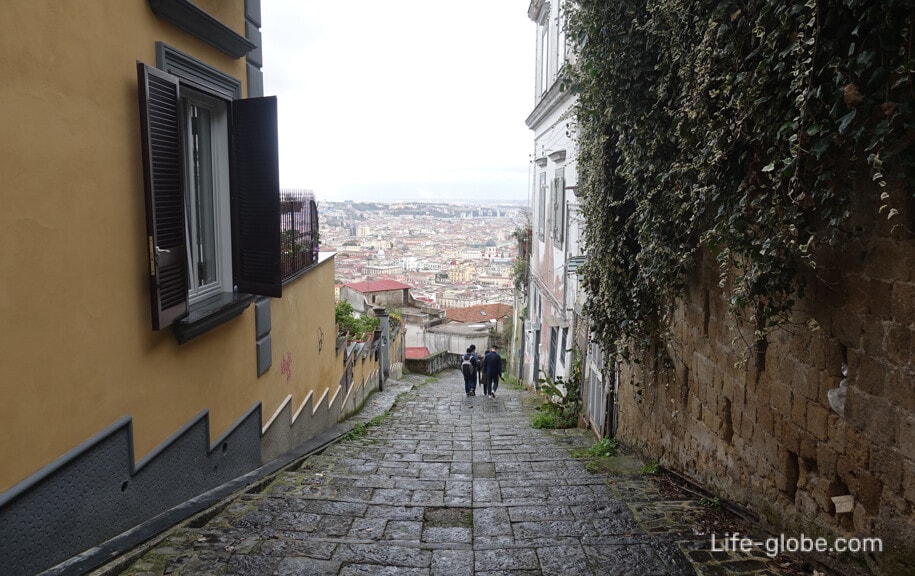
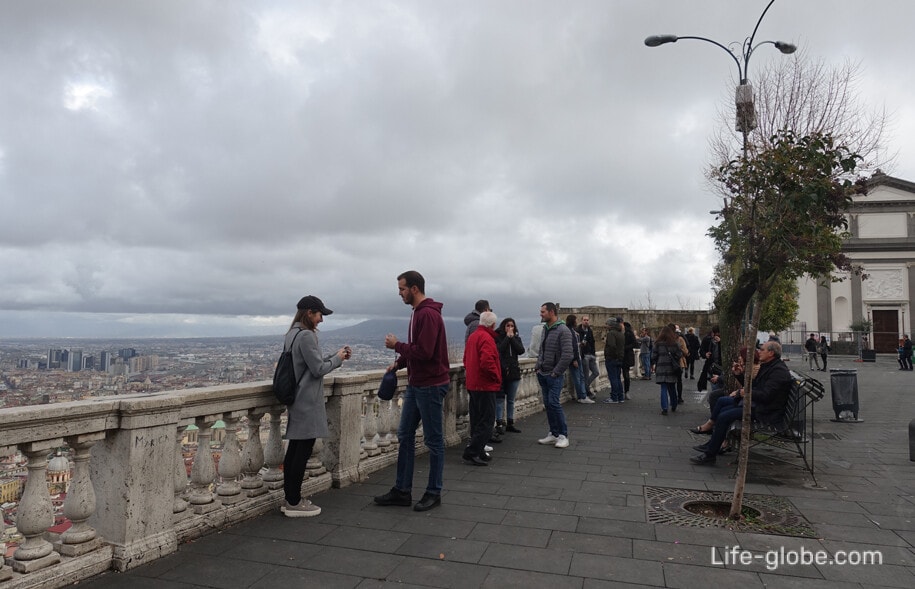
You can also get:
-by metro line 1, Vanvitelli stop. From the stop to the castle, where some 750 meters;
- using one of the lines of the funicular: the funicular from the Central Via Toledo to piazza Fuga; funicular of Chiaia from Parco Margherita to Naples; the funicular from Piazza Montesanto to Morghen;
- bus V1. Also at a distance of 750 meters - kilometers are buses 128, 130, 131, 132, 181, etc.